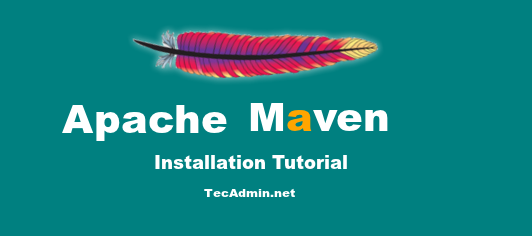Namenode loads the filesystem state from fsimage and stays in safe mode and wait for data nodes to report their blocks. Safemode is a read-only mode for HDFS cluster, so that it does not prematurely start replicating the blocks. Use following command to let the namenode leave safemode forcefully. $ hadoop dfsadmin -safemode leave In newer versions of hadoop command is deprecated. You can use hdfs command instead of hadoop. For example: $ hdfs dfsadmin -safemode leave You must run hadoop fsck so sort out any inconsistencies created in the hdfs due to above command.
Author: Rahul
Using SQL Query Window: Use WITH REPLACE option with the RESTORE command on MSSQL query window. Change database name and backup file location as per your setup. USE MASTER GO RESTORE DATABASE MyDB FROM DISK = ‘C:\Backups\MyDB_15082016.bak’ WITH REPLACE GO
Golang, also known as Go, has emerged as a popular programming language for modern software development due to its simplicity and efficiency. This tutorial provides a comprehensive guide on installing Golang on CentOS/RHEL versions 9 and 8, two widely used Linux distributions renowned for their stability and robustness in enterprise environments. Prerequisites Before beginning the installation, ensure you have: A CentOS/RHEL 9 or 8 system. Root or sudo access to the system. Basic knowledge of Linux terminal commands. Step 1: Update Your System Start by updating your system packages to the latest versions. This ensures compatibility and security. Open a…
In the realm of big data, Hadoop stands out as a cornerstone technology, enabling the processing of vast datasets across clusters of computers using simple programming models. Among the most fundamental, yet powerful, examples of Hadoop’s capabilities is the MapReduce job for counting words in a text, commonly known as the Wordcount example. This guide is designed to take you through the process of running a Wordcount MapReduce job in Hadoop, providing insights into both the theoretical underpinnings and practical steps. What is MapReduce? MapReduce is a programming model and an associated implementation for processing and generating big data sets…
Java, a popular programming language and computing platform, is essential for many software applications and development projects. This article guides you through the process of installing Java 8 (also known as Java SE 8) on CentOS/RHEL 9/8 and Fedora systems. Java 8, while not the latest version, is widely used and sought after for its stability and performance in various enterprise environments. Step 1: Update Your System Before proceeding with the installation, it’s good practice to update your system to ensure all existing packages are up to date. Open a terminal and execute the following command: sudo dnf update Step…
Few days back, after creating a xenserver i found that there no template available for creating Ubuntu 16.04 LTS vm, even their was no template for Ubuntu 14.04 LTS. So first I had added template of required Ubuntu version in xenserver. Use this article to add new template for Ubuntu 16.04 LTS operating system. This tutorial will help you to create Ubuntu 16.04 LTS vm using netboot url on citrix xenserver. How To Add Ubuntu 16.04 LTS Template in XenServer 6.2 Create Ubuntu 16.04 LTS VM After adding template in your Ubuntu system let’s started with creating new vm. Open…
Installing Apache Maven on CentOS or RHEL (Red Hat Enterprise Linux) systems is a straightforward process that allows developers to manage and understand the build lifecycle, dependencies, and project documentation of their Java projects. Maven, a powerful project management tool developed by the Apache Software Foundation, uses an XML file to describe the software project being built, its dependencies on other external modules and components, the build order, directories, and required plugins. This article will guide you through the steps to install Apache Maven on CentOS/RHEL versions 9, 8, and 7. Prerequisites A system running CentOS/RHEL 7, 8, or 9…
Today I have installed a new Citrix XenServer 6.2 at my workplace. When I connect it through XenCenter 6.2, I could not find a template for Ubuntu 16.04 LTS or 14.04 LTS. After googling I found below steps to create template for Ubuntu 16.04 LTS or 14.04 LTS in XenServer. How To Add Ubuntu 16.04 LTS Template in XenServer 6.2. Step 1 – Update pygrub in Xenserver Edit the file /usr/lib/python2.4/site-packages/grub/GrubConf.py on the XenServer host machine. Got to line no 428 and change from: if arg.strip() == “${saved_entry}”: to: if arg.strip() == “${saved_entry}” or arg.strip() == “${next_entry}”: Let’s start with…
Firefox stands out as a widely-used web browser, celebrated for its swift performance, robust security, and commitment to user privacy. In this guide, we’ll demonstrate how to acquire and set up the most recent version of Firefox using a zip file for Fedora or CentOS systems. This guide provides instructions on how to seamlessly install Firefox on CentOS, RedHat, and Fedora Linux distributions. We’ll be focusing on the latest Firefox pre-built version for Linux. With this version, there’s no need for further compilation—just unzip the file and you’re all set to browse. Useful links:- How to Install Google Chrome on…
For many years, I’ve been immersed in the world of Citrix XenServer, managing a fleet of XenServers via XenCenter on a dedicated Windows machine. Traditionally, our approach to VM backup has been a manual process, always necessitating a shutdown of the VM. This practice has understandably led to some frustration among VM owners due to the extended downtime. However, a recent search revealed a more efficient method that allows for backing up VMs without the need to shut them down, thereby eliminating downtime. In this tutorial, we’re going to guide you through the process of backing up active VMs step…


